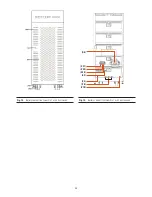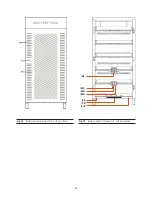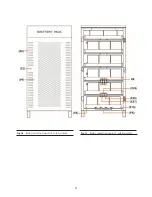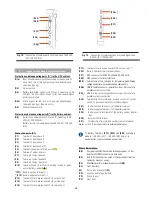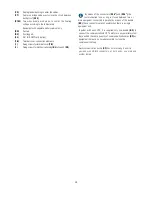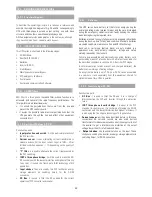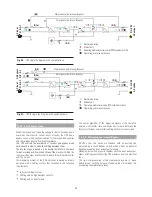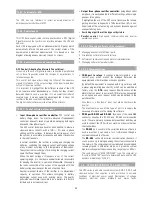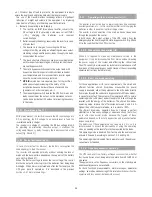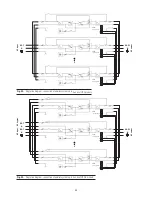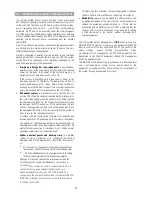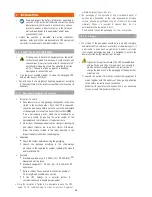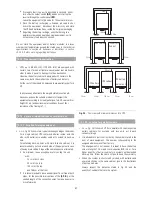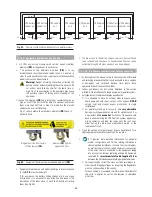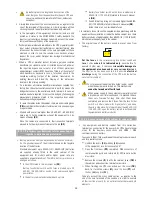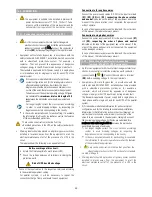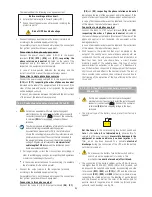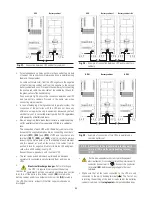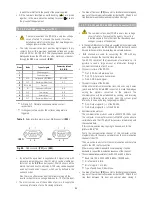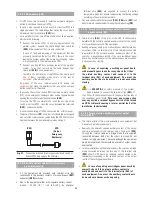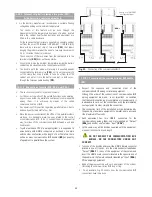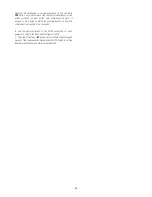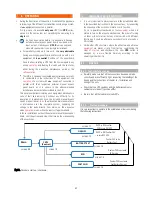
22
4.3.7. Terminals for EPO.
The UPS has two terminals to install an external button of
emergency output shutdown (EPO).
4.3.8. Control panel.
This UPS
has a sophisticated control panel based on a DSP (Digital
Signal Processor) that performs as interface between the UPS and
end-user.
Each UPS is equipped with an alphanumerical LCD panel, which
automatically informs the end-user of the current status of the
equipment and electrical measurements. It is based on a tree
diagram, allowing an easy bro
wsing through its screens.
4.3.9. Control software and communications.
AFC Control (Adaptive Feedforward Cancellation).
It consists in the use of digital resonators connected in parallel and
set to those frequencies where the consigns or perturbations to
refuse are expected.
This control technique allows doing the follow of the sinewave
signals of reference of the output voltage in the inverter and input
current of the active rectifier.
It is important to high
light that the different controls of the UPS
do not operate either independently or locally, but they interact
between them in such a way that it is an overall controller of
coupled type. It means operating advantages like
to adapt the
rectifier to the load conditions immediately.
The digital control software works at two different levels:
4.3.9.1. Control software at low level.
•
Input
three-phase rectifier controller
: PFC control and
battery charge loops. The structure adopted of independent
control per phase of cascade type allows managing both single
phase and three phase inputs.
The AFC control technique has also been applied, to assure a
sinewave mains currents, with a THDi < 2%, and in phase
shifting with the voltages, to balance the active power of all
the system, to accelerate its response and make it insensitive
to the load transients.
In normal conditions, the rectifier is running and charging the
batteries, controlling the charging current and floating voltage
at any moment according to the temperature of themselves.
The system is also in charge of minimizing the charging current
ripple that flows through them.
When the input voltage or frequency is out of the correct
operating range, it is shut down and batteries are responsible
for keeping the inverter in operation. Meanwhile, they supply
the loads connected at the output of the equipment till the
battery voltage decreases at the end of back-up time.
Another important feature of the rectifier is its bidirectional
capacity in operation. This allows consigning a battery
discharging current even with existing mains. This quality
performance will make it possible to do a battery test both in
full load and in no load c
onditions.
•
Out
put three- phase rectifier controller:
being independent
per phase, it is easily adapted to different settings, either single
phase or three phase.
It highlighted the use of the AFC control technique that allows
getting an output voltage with a THDv lower than 1,5% in non-
linear load at the output and good dynamic response against
unexpected step
loads.
•
Switching algorithm of the bypass thyristors
.
•
Parallel control
: high speed communication and inverter
parallel connection.
4.3.9.2. Managing software of the equipment.
Managing and control of different parts.
Visualization software for user interface.
Software of communication and protocol implementation.
Managing software of parallel system.
4.3.9.3. Communications.
•
C
OM port to relays
: It supplies a digital signals in a dry
contact way, which makes the dialogue between the
equipment and other machines or devices possible.
By default the equipment is supplied with 4 signal relays with
a preset programming (see chart 2), which can be modified at
factory or by the
S.T.S.
upon request. Chart 6 shows all the
alarms that can be set to any relay. A fifth relay can be supplied
as an option and upon request, which can be defined in the
purchase order.
Also there is a “shutdown” input that allows shutdown the
inverter.
The
most common use of this type of port is to supply the
necessary information to the closing file software.
•
COM port RS-232 and RS-485
: By means of the same DB9
connector supplies the RS-232 and RS-485 communication
ports. They are mutually exclusive between them and they are
used to connect the UPS with any machine or device that has
this standard bus.
The
RS-232
port consists in the serial transmission of data, in
such a way that it can send a lot of information through a
communication cable of 3 wires.
The
RS-485
, unlike other serial communication channels, it
uses 2 wires only to dialogue among the systems connected to
this network. The communication is established by sending and
receiving signals in differential mode, so it gives the system
high immunity against the noise
and long range (approx. 800m).
The used protocol is “MASTER/SLAVE” type. The computer or
IT system (“MASTER”) asks for a determined data, and the UPS
answers immediately (“SLAVE”).
4.4. OPERATING PRINCIPLE OF AN EQUIPMENT.
This UPS
series is a double conversion system AC/DC, DC/AC with
sinewave output that supplies a safe protection in extreme
conditions of electrical power supply (fluctuations of voltage,
frequency, electrical noises, blackouts and mains faults,








